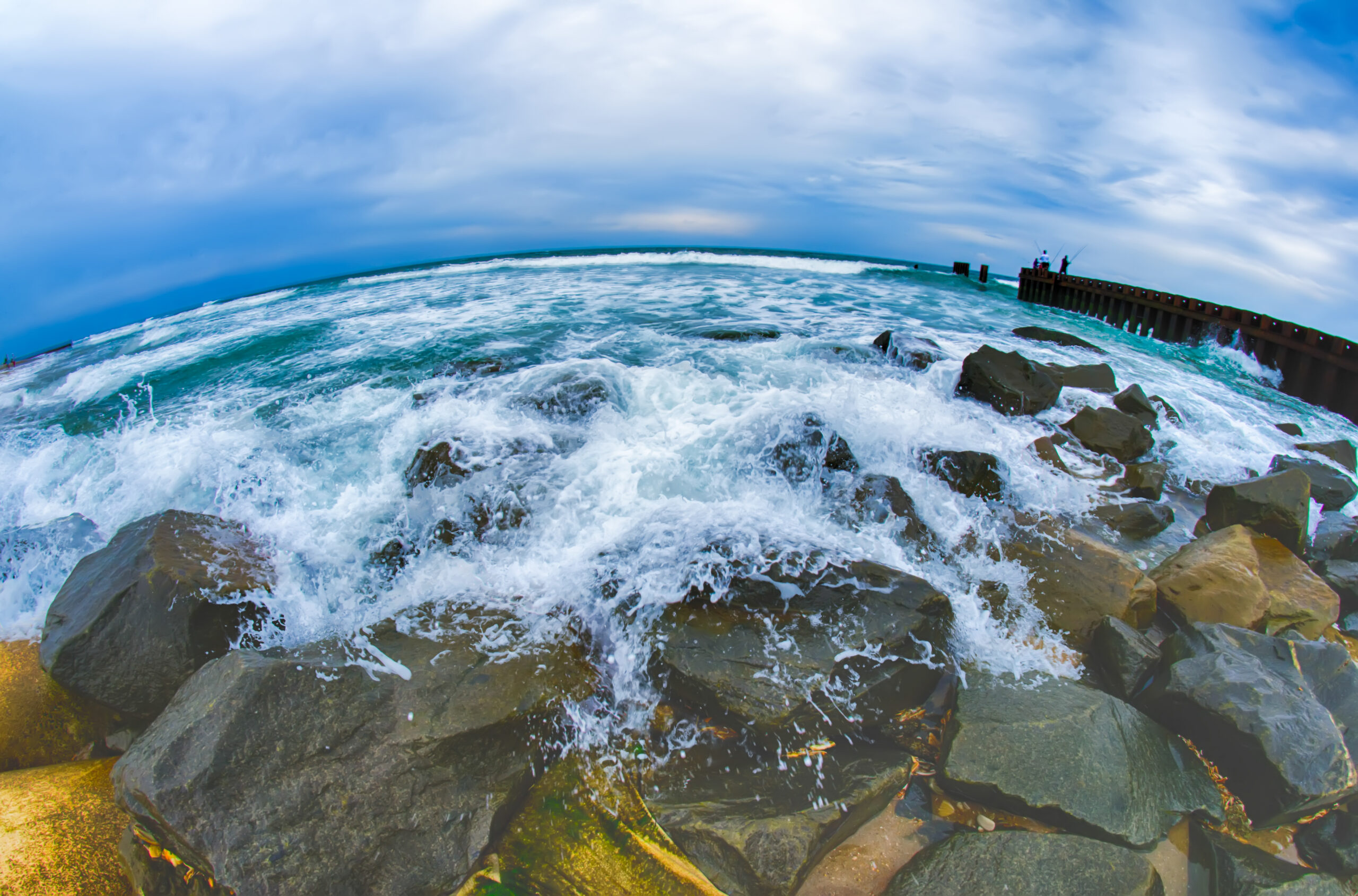By Megan Bailey
Explore the escalating risks climate change poses to U.S. coastal communities, including rising sea levels, extreme weather events, and their profound economic and ecological impacts. Discover the importance of inclusive and proactive coastal resilience strategies to mitigate vulnerabilities and preserve invaluable coastal ecosystems.
Coasts are vital for marine life, commerce, and culture, encompassing the Atlantic, Pacific, and Arctic oceans; the Gulf of Mexico; the Caribbean Sea; and the Great Lakes. Over 128 million people reside in U.S. coastal counties (NOAA), drawn to the beauty and economic opportunities. However, the factors that make coasts appealing also make them vulnerable to the impacts of climate change.
The Dual Threat: Rising Seas and Extreme Weather
Sea levels are rising, a phenomenon primarily driven by melting glaciers and the expansion of seawater as it warms. This increase in sea level is not uniform, with some areas experiencing more pronounced rises due to geological and climatic factors. While the exact magnitude and timing of sea level rise remain uncertain, the consensus among scientists is that even conservative estimates pose significant risks to coastal communities.
Coupled with rising sea levels, extreme weather events, including hurricanes and intense rainfall, are becoming more frequent and severe. There is growing evidence to suggest that climate change is amplifying the intensity of hurricanes and contributing to increased rainfall patterns. These events exacerbate the risk of flooding, inundating coastal areas and threatening lives, properties, and critical infrastructure.
The Ripple Effect on Coastal Economies
Coastal counties contribute over $9.5 trillion to the U.S. economy annually and support over 58 million jobs across various sectors (NOAA), including fishing, tourism, real estate, and defense. These vibrant economies rely heavily on the functionality and resilience of coastal infrastructure. Yet, climate-induced inundation and storm damage can disrupt business operations, supply chains, and transportation routes, leading to economic losses that ripple far beyond the affected areas.
For instance, Hurricane Katrina, the costliest hurricane on record, resulted in damages exceeding $182.5 billion in 2021 dollars (NCEI), underscoring the profound economic toll extreme weather events can exact on coastal communities and the broader economy.
Ecosystems Under Siege
Coastal ecosystems, ranging from estuaries and mangroves to marshes and reefs, are invaluable for their ecological, economic, and societal contributions. These ecosystems support diverse wildlife, offer recreational opportunities, and provide essential services like water purification and carbon sequestration.
However, rising temperatures, sea level rise, and extreme weather events are taking a toll on these fragile ecosystems. For example, nutrient runoff from agricultural and urban areas is creating vast dead zones where marine life cannot survive due to low oxygen levels. Additionally, saltwater intrusion into freshwater systems threatens aquatic habitats and compromises freshwater supplies, increasing the challenges faced by coastal ecosystems.
Inequity and Vulnerability
Climate change amplifies existing socio-economic disparities, disproportionately affecting socially vulnerable populations in coastal areas. Hispanic and Latino communities, for instance, are 50% more likely to live in areas projected to experience increased traffic delays from high tide flooding (EPA).
Indigenous communities, such as the Isle de Jean Charles Band of the Biloxi-Chitimacha-Choctaw Tribe, are among the most vulnerable, facing both cultural and physical displacement due to rising seas. Despite proactive adaptation efforts by some Tribes, many face institutional and resource barriers that hinder their ability to adapt to changing environmental conditions.
Building Resilience: A Collective Endeavor
Adapting to the impacts of climate change requires concerted efforts from governments, communities, businesses, and individuals. Here are some strategies to bolster coastal resilience:
- Risk Identification: Utilize tools and resources like the EPA’s Climate Ready Estuaries program to assess and understand coastal risks.
- Nature-Based Solutions: Implement nature-based solutions such as living shorelines, green spaces, and sand dunes to enhance coastal resilience and mitigate the impacts of storm surges and flooding.
- Inclusive Planning: Ensure inclusive and participatory coastal resilience planning that incorporates the perspectives and needs of community members, especially those most vulnerable to climate impacts.
- Awareness and Preparedness: Educate communities about flood risks, insurance requirements, and emergency preparedness measures to enhance resilience and reduce vulnerability.
- Protect and Restore: Advocate for the protection and restoration of coastal ecosystems, such as wetlands, which play a crucial role in attenuating storm impacts, improving water quality, and storing carbon.
The connection between climate change and coastal vulnerability is undeniable. As sea levels rise and extreme weather events become more frequent and severe, coastal communities face escalating risks to their lives, properties, and economies. However, by adopting proactive and inclusive approaches to coastal resilience, we can mitigate these risks, safeguard our coastal communities, and preserve the invaluable ecosystems that enrich our lives.





